The IM-1 lunar lander Odysseus touched down on Thursday, February 22, 2024. At first, there were questions as to whether the lander was upright on the moon. According to a report on February 23, the lander is on its side but “alive and well”. Mission controllers have now powered down the lander, though they hold out hope for after the lunar night.
Broken-legged Odie powers down
Intuitive Machines’ Odysseus moon lander was powered down Thursday, February 29, but not before sending us its final image from the lunar surface. IM said its goodbye on X.com (formerly Twitter).
Before its power was depleted, Odysseus completed a fitting farewell transmission. Received today, this image from February 22nd showcases the crescent Earth in the backdrop, a subtle reminder of humanity’s presence in the universe.
Goodnight, Odie. We hope to hear from you… pic.twitter.com/RwOWsH1TSz
— Intuitive Machines (@Int_Machines) February 29, 2024
Click here to view Odie’s final image from the lunar surface.
But the IM-1 mission may not be over quite yet. The New York Times, quoting IM CEO Steve Altemus, reported mission controllers hold out hope Odie might be revived after the two-week lunar night.
The spacecraft, nicknamed Odie, is to begin winding down operations at noon Eastern time on Thursday, the company said. “Flight controllers intend to downlink additional data and command Odie into a configuration that he may phone home if and when he wakes up when the sun rises again.”
There’s recent precedent for a moonlander waking up. Earlier in the week, the Japanese moon lander SLIM surprised its handlers by coming back to life. And we also know why Odie tipped over: a broken leg. The force of landing appears to have ripped the leg off. Physicist and astronomer Marshall Eubanks shared an International Lunar Observatory Association image of the severed limb on X.com.
ILOX image of broken IM-1 lander leg lying on the ground pic.twitter.com/FtgoSAkNPf
— T. Marshall Eubanks (@TM_Eubanks) February 29, 2024
IM hailed the mission’s accomplishments in a statement on the company’s website. An ebullient Altemus went over the top in his praise:
Before this mission, we had an absolute sense of humility and relied on our technical excellence and years of experience to triumph and persevere throughout all the challenges we faced during the mission. Following our unequivocal success, I am emboldened for the future of the U.S. and international lunar economy and Intuitive Machines’ future as we believe we can win, execute, and pioneer the future of the cislunar market.
Odysseus has reached the lunar surface
We all waited through a tense few minutes late Thursday afternoon (February 22, 2024), while mission controllers with private space exploration company Intuitive Machines in Houston confirmed contact. But then Intuitive Machines said the word we all were waiting for: YES. The Odysseus lander was on the moon’s surface, and it was communicating. By Friday evening, the company announced the lander is on its side but “alive and well”. We’re back on the moon for the first time in 50 years!
After it was clear Odysseus was down safely on Thursday, congratulations from the giants of the spaceflight world – including SpaceX and Blue Origin – began pouring in. And NASA administrator Bill Nelson gave a stirring speech, welcoming Odysseus, and pointing out that the landing is part of a great collaborative effort to return humans to the moon in NASA’s Artemis program:
Today, for the first time in half a century, America has returned to the Moon ??.
On the eighth day of a quarter-million-mile voyage, @Int_Machines aced the landing of a lifetime.
What a feat for IM, @SpaceX & @NASA.
What a triumph for humanity.
Odysseus has taken the Moon. pic.twitter.com/JwtCQmMS2K
— Bill Nelson (@SenBillNelson) February 23, 2024
Now we wait
We hope we’ll soon have more updates from IM or NASA that they’ve established better contact with Odie. And we’re all anticipating images from the moon’s surface!
“Odysseus has a new home” https://t.co/oVgLobxH8T
— Intuitive Machines (@Int_Machines) February 22, 2024
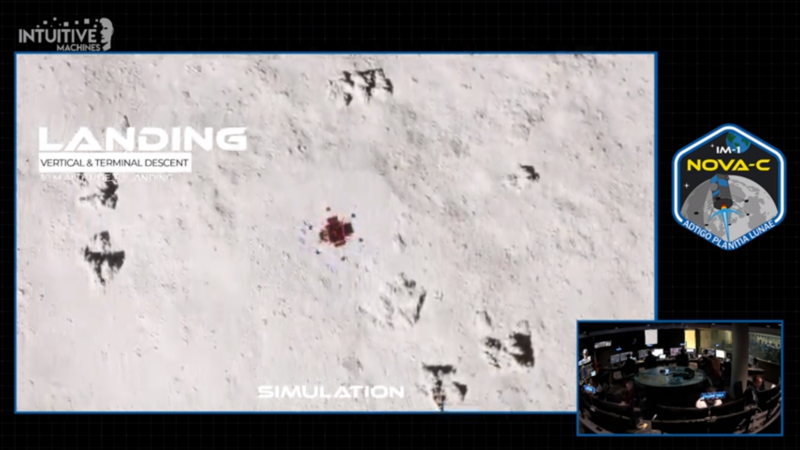
Was the lander down sideways? Why south pole?
There was some worry on Thursday that the lander was sideways on the moon. And, by Friday evening, Intuitive Machines confirmed the lander is on its side.
Odysseus set down in a lunar crater called Malapert A. This crater – like all lunar craters, created in an ancient impact – is close to the moon’s south pole. The south pole region of the moon is attractive to NASA, because it’s here that previous orbiter missions have found ice. And water is a key ingredient for future lunar exploration success. Future astronauts will need it for drinking and growing plants. Also, water – aka H2O – can be separated into oxygen and hydrogen by electrolysis using solar energy. So water can provide hydrogen and oxygen for breathing and rocket fuel.
But the lunar south pole, with its rocky terrain, can be treacherous. Malapert A is a region that’s relatively flat in comparison with its surroundings, according to NASA.
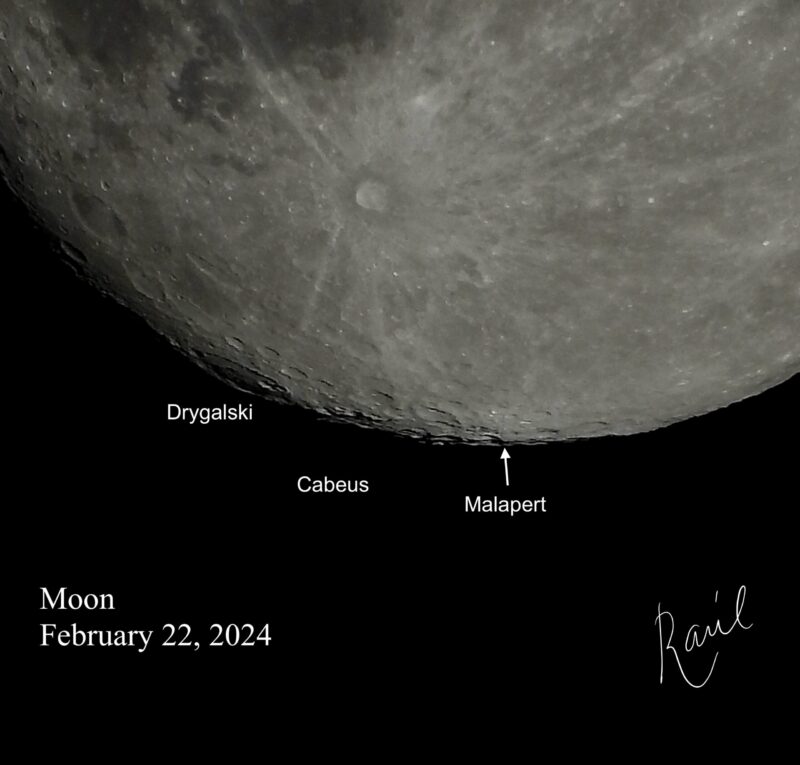
The lunar lander signal was weak
In the first tense minutes on Thursday, space engineers at Intuitive Machines seemed to be having trouble establishing a strong connection with Odysseus on the moon. The signal was weak, but it was there. Even ham operators (amateur radio operators) in Germany were able to occasionally pick up the signal from the moon.
The successful landing by @Int_Machines’ odyssey on the Moon, independently verified by citizen astronomers using the refurbished 20m radio antenna at Bochum, showcases how we all can play a part in space exploration. https://t.co/Qfuj4It5eI
— Franck Marchis (@AllPlanets) February 22, 2024
Moon images from orbit
We’ve already seen images of the moon as Odie approached its target. On February 21, 2024, Intuitive Machines shared its first image of the moon.
Odysseus’ Terrain Relative Navigation camera captured this image of the Bel’kovich K crater in the Moon’s northern equatorial highlands.
It is an approximate 50 km diameter crater with mountains in the center, made when the crater was formed.
(21FEB2024 1750 CST) pic.twitter.com/0egu0NOrKP— Intuitive Machines (@Int_Machines) February 21, 2024
Also on February 21, Intuitive Machines shared this image on X, showing that the moon is looming large in Odie’s sight!
Odysseus passes over the near side of the Moon following lunar orbit insertion on 21FEB2024. The lander continues to be in excellent health in lunar orbit.
(21FEB2024 1608 CST) pic.twitter.com/UX4kgkv5EW— Intuitive Machines (@Int_Machines) February 21, 2024
Odie’s epic journey started smoothly
Unlike Odysseus’s namesake – who made an epic journey home from the Trojan War – the IM-1 mission progress was smooth sailing.
Here’s the timeline that Intuitive Machines shared on X on Wednesday:
Flight controllers analyzed the post-Lunar Orbit Insertion engine burn data and updated the anticipated flight maneuver timing, including an expected 1630 CST landing opportunity on Thursday. The landing opportunity will be Odysseus’ hardest challenge yet. The lander continues to… pic.twitter.com/T6ULovaOPf
— Intuitive Machines (@Int_Machines) February 21, 2024
Looking back at Earth
After launch, the lunar lander looked back at Earth and snapped some images on February 16 of our home planet in its rearview mirror.
Intuitive Machines successfully transmitted its first IM-1 mission images to Earth on February 16, 2024. The images were captured shortly after separation from @SpaceX's second stage on Intuitive Machines’ first journey to the Moon under @NASA's CLPS initiative. pic.twitter.com/9LccL6q5tF
— Intuitive Machines (@Int_Machines) February 17, 2024
IM-1 lunar lander launched February 15
The Intuitive Machines IM-1 lunar lander rode a SpaceX Falcon 9 out of Kennedy Space Center on February 15. It lifted off at 1:05 a.m. Eastern Time from historic launchpad 39A at NASA’s Kennedy Space Center in Florida. Notably, the early morning launch was a return to lunar service for KSC’s Launch Complex 39A, which hosted all but one of the crewed Apollo missions to the moon.
The IM-1 lander – nicknamed Odie – is the first American spacecraft to make a soft landing on the moon’s surface since the final Apollo mission touched down in 1972.
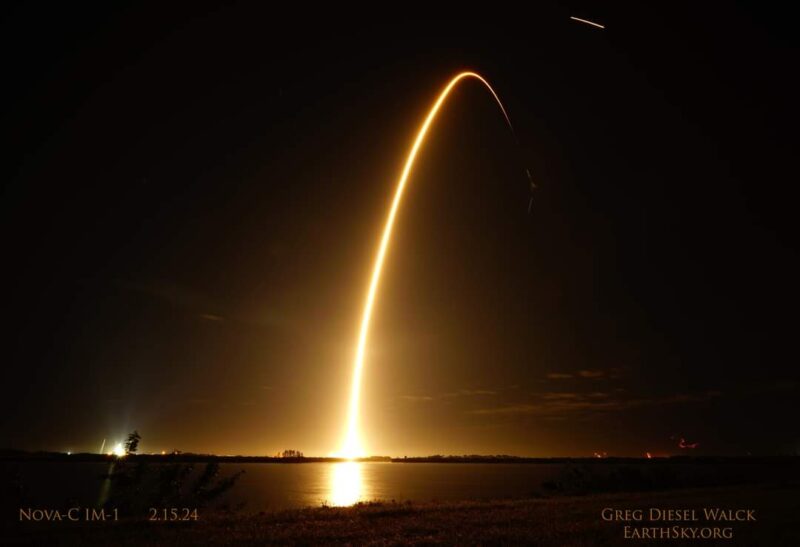
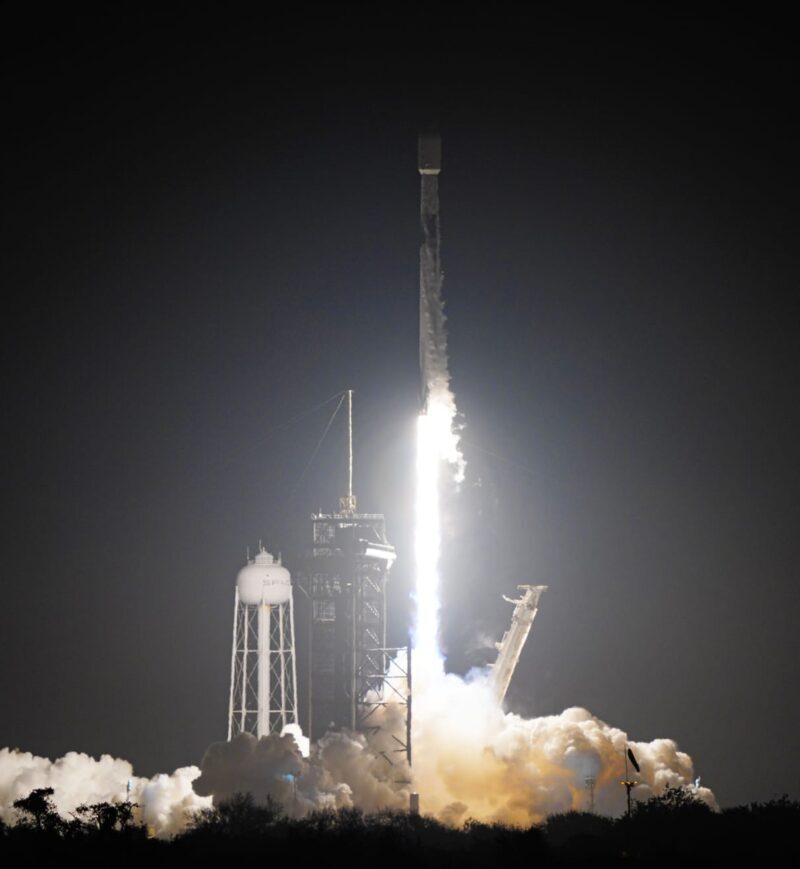
Have spacecraft, will travel
While IM-1 will deliver a handful of NASA science payloads, it will be carrying commercial cargo, too. Intuitive Machines says this mission will be the first of many private payloads it will carry to Earth’s natural satellite:
IM-1 is a trailblazing mission aimed at creating a commercial lunar economy, delivering commercial payloads and NASA science and technology payloads that will pave the way for a sustainable human presence on and around the moon.
The Odysseus lander (or Odie) is a hexagonal cylinder about 13 feet (four meters) tall and five feet (1.5 meters) wide. The 4,200-pound (1,900-kg) vehicle can carry up to 220 pounds (100 kg) of cargo with it to the moon.
Lunar lander aimed for the moon’s South Pole
The lander was targeting the lunar South Pole:
The lander will land on the moon at Malapert A, a crater near the South Pole. The landing will take place on February 22. The lander is capable of operating for about 14 Earth days in sunlight.
IM’s contract with NASA’s Commercial Lunar Payload Services (CLPS) includes three missions total. This mission comes just one month after another private company – Astrobotic – attempted to land on the moon. That mission, Peregrine, developed a fuel leak soon after liftoff and eventually crashed back to Earth. Also, Japan’s space agency landed a mission on the moon last month as well, named SLIM, but it landed upside down.
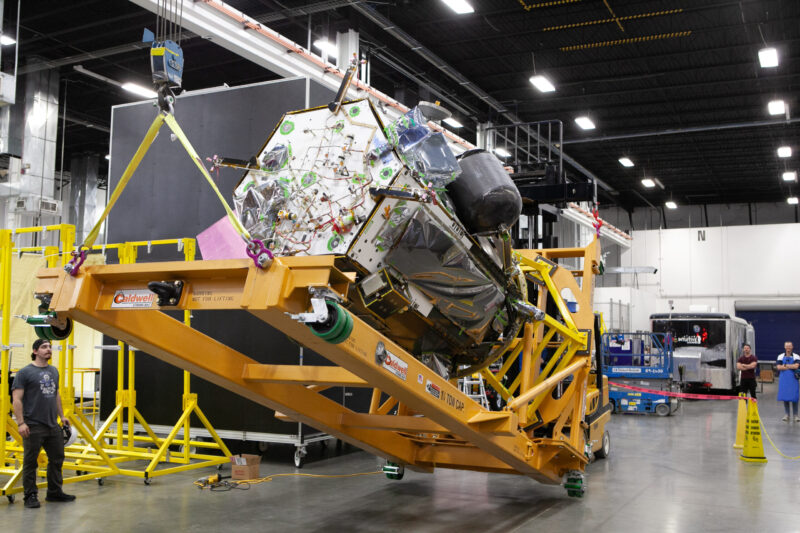
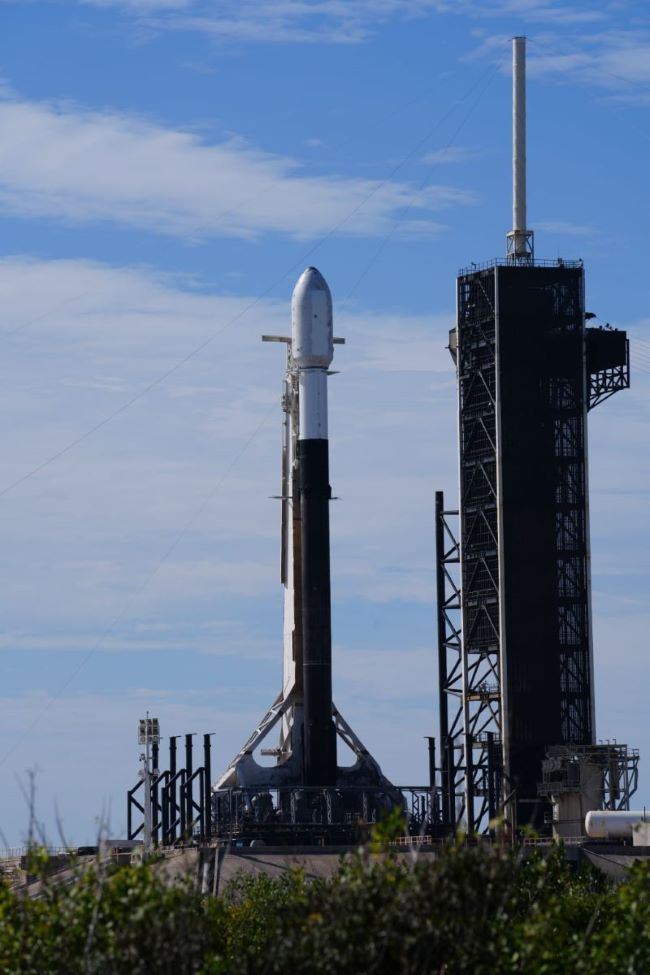
Bottom line: The Intuitive Machines IM-1 lunar lander – nicknamed Odie – landed on the moon February 22, 2024. Sadly, on Thursday, February 29, Odie powered down. But it may revive after the lunar night.











